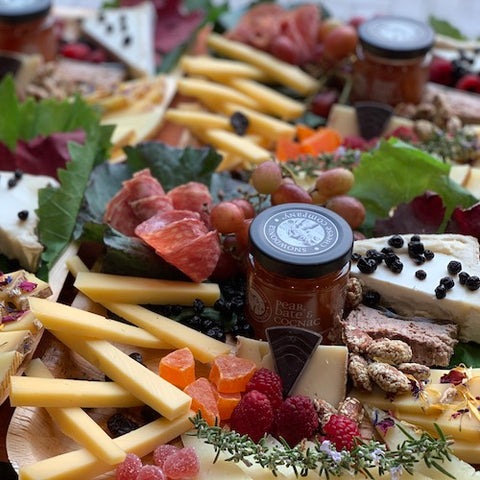7 Ways to Connect with What You Eat
Posted on Wednesday, August 13, 2014 | By Alycia Lang |
"They're growing!" My friend reported to me that a mushroom-growing kit I'd given her had, in fact, made mushrooms. "Now what do I do with it?" she inquired. "You eat them." I replied. "Are you sure they are OK?" she asked with some trepidation.  Don't put that in your mouth, you have no idea where its been! We've all heard that before, right? But most of us frankly give little thought to where our food has been. It could have come from Tulsa or Timbuktu, but safely wrapped in plastic or sealed in a can and marked with a 'best by' date, we have come to trust what is packaged more than what we make ourselves. So how do we reconnect with the food that has become so distant from us?
Don't put that in your mouth, you have no idea where its been! We've all heard that before, right? But most of us frankly give little thought to where our food has been. It could have come from Tulsa or Timbuktu, but safely wrapped in plastic or sealed in a can and marked with a 'best by' date, we have come to trust what is packaged more than what we make ourselves. So how do we reconnect with the food that has become so distant from us?
 Ask plenty of questions about the food you are eating, where it came from and how it was made. Savor the stories along with your meal!
Ask plenty of questions about the food you are eating, where it came from and how it was made. Savor the stories along with your meal!
 Don't put that in your mouth, you have no idea where its been! We've all heard that before, right? But most of us frankly give little thought to where our food has been. It could have come from Tulsa or Timbuktu, but safely wrapped in plastic or sealed in a can and marked with a 'best by' date, we have come to trust what is packaged more than what we make ourselves. So how do we reconnect with the food that has become so distant from us?
Don't put that in your mouth, you have no idea where its been! We've all heard that before, right? But most of us frankly give little thought to where our food has been. It could have come from Tulsa or Timbuktu, but safely wrapped in plastic or sealed in a can and marked with a 'best by' date, we have come to trust what is packaged more than what we make ourselves. So how do we reconnect with the food that has become so distant from us?
- Touch it. Knead some dough, slather on some sauce, snap the stems off. My personal favorite is massaging salt into vegetables and then packing them tightly into jars for fermenting. It teaches you a lot about texture and freshness.
- Compare it. Go to your local farmer's market and pick a few standard vegetables (carrots, zucchini, onions, whatever). Then go to the supermarket and get the same items. How do they stack up? What is the difference between the texture, the freshness and taste? For extra credit cook with them separately and compare results.
- Identify it. What do artichokes and broccoli have in common? Or potatoes and radishes? Each pair is the same part of the plant. How about ham and drumsticks? How many other foods can you say what part of the animal or plant they are?
- Grow it. If you don't have the space for a full-scale vegetable garden, even a small herb pot on your kitchen windowsill helps remind you where your food comes from when you grow it from a tiny seed.
- Source it. Pick an item that you buy regularly and find out where it came from. Another state? Another country? How big is the company? My favorite hot sauce is made 397 miles from here at a company with 50 employees. They make over 20 million bottle a year!
- Learn it. Ever wonder what happens between milk and mozzarella or cucumbers and pickles? Get the story and skills at a cheese making class and spread the word.
- See it. There are farmers, bakers, ranchers and other makers all over the place and many have regular tours. Make a trip to visit them and see how they produce food and where it goes next.
 Ask plenty of questions about the food you are eating, where it came from and how it was made. Savor the stories along with your meal!
Ask plenty of questions about the food you are eating, where it came from and how it was made. Savor the stories along with your meal!

